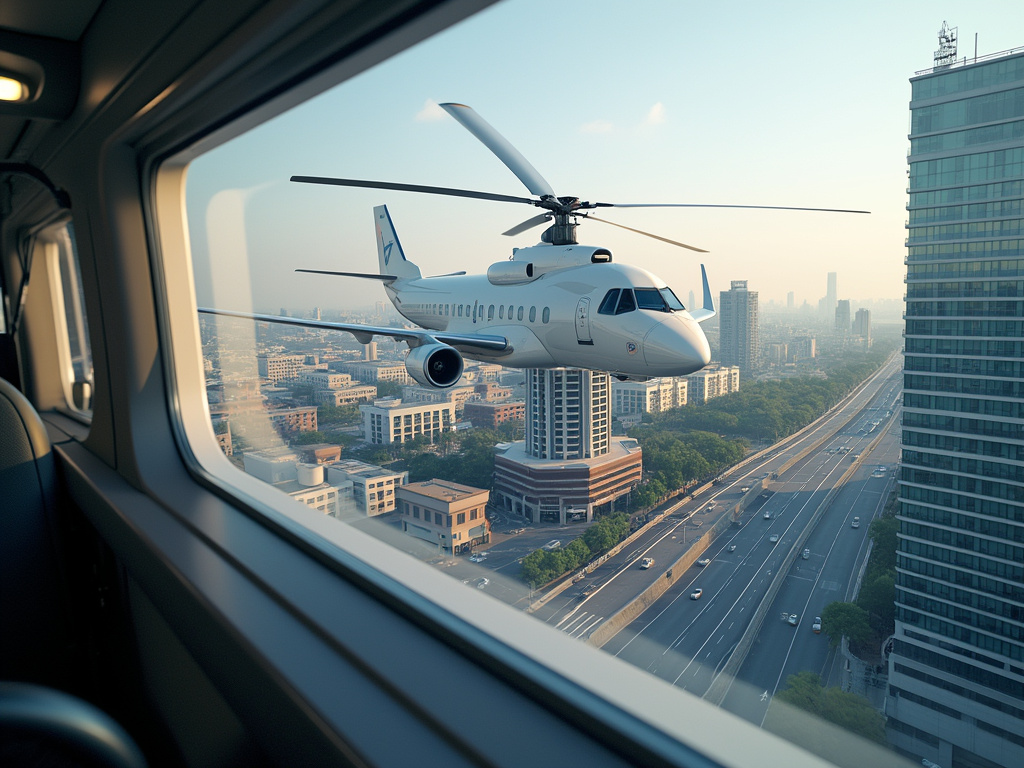Urban air mobility is poised to revolutionize city transportation with the advent of electric vertical take-off and landing (eVTOL) aircraft. These flying taxis promise to drastically reduce travel times, offering a sustainable and efficient alternative to ground-based transport in congested urban areas.
Key Takeaways:
- eVTOLs can transport 4-6 passengers over distances up to 100 miles
- Companies like Joby Aviation and Volocopter are leading the UAM revolution
- Electric propulsion enables zero-emission and quieter air travel
- Infrastructure development and partnerships are crucial for UAM implementation
- Commercial launch of flying taxis is expected as early as 2025
The Future of Urban Transportation: eVTOLs and Flying Taxis
Urban Air Mobility (UAM) is set to transform city travel with electric vertical take-off and landing (eVTOL) aircraft. These flying taxis offer on-demand, automated passenger transportation in urban environments. Key players in this emerging industry include Joby Aviation, Volocopter, and Archer Aviation.
Technological advancements have made UAM a reality. Electric propulsion allows for zero emissions, addressing environmental concerns. Honeywell and DENSO have developed a lightweight electric motor weighing less than 10 pounds, showcasing the rapid progress in this field.
Noise reduction is a crucial factor for urban integration. Joby's eVTOL has achieved impressive results, registering just 45.2 A-weighted decibels (dBA) at 1640 feet. This is significantly quieter than traditional helicopters, making it more suitable for city use.
These flying taxis boast impressive capabilities. With a range of up to 100 miles and the ability to carry 4-6 passengers, they can drastically cut travel times. For instance, a trip from Manhattan to JFK Airport could take just 7 minutes, a fraction of the time needed by car.
Infrastructure and Partnerships Paving the Way for UAM
The success of UAM relies heavily on infrastructure development and strategic partnerships. New York City is taking the lead with initiatives such as the electrification of Downtown Manhattan Heliport and development plans for JFK and LaGuardia airports.
Key partnerships are accelerating progress in the field:
- Joby has partnered with Delta Air Lines
- Volocopter is working with the European Union Aviation Safety Agency (EASA)
Government support is also gaining momentum. California has passed legislation to support UAM, while Ohio is offering incentives to attract industry players. The concept of vertiports – takeoff and landing sites on building roofs – is being explored to create a network of urban air transport hubs.
Delta's $7 billion investment in New York City airport upgrades further demonstrates the commitment to integrating UAM into existing transportation infrastructure.
Testing, Certification, and Commercial Launch
Flight testing is well underway, with Joby's aircraft having covered over 30,000 miles in tests. Archer Aviation's Midnight aircraft has also completed its maiden flight, marking a significant milestone.
The certification process is rigorous, ensuring safety and reliability. Volocopter's VoloCity is expected to be the first internationally certified eVTOL in 2024, paving the way for others to follow.
Regulatory support is crucial for UAM integration. New York City Mayor Eric Adams has voiced his backing for the technology, signaling a positive outlook for urban implementation.
Commercial launch timelines are ambitious, with Joby and Archer Aviation aiming for 2025. Potential markets include major urban centers such as New York City, Atlanta, Los Angeles, San Francisco, South Florida, Texas, and Chicago.
Optimizing UAM Operations and Future Developments
As UAM moves closer to reality, focus is shifting to optimizing operations. Algorithm development for routing and scheduling eVTOLs is underway, addressing challenges such as demand fluctuations, customer time windows, and battery management constraints.
Integration with ground transportation is a key area of development, aiming to create seamless travel experiences for passengers. Honeywell's cloud-connected avionics system, Honeywell Anthem, is being tailored specifically for UAM aircraft, enhancing safety and efficiency.
Future research directions include synchronizing air and ground transportation to maximize the benefits of UAM. As the technology matures, we can expect to see flying taxis becoming an integral part of urban mobility, offering a fast, clean, and efficient alternative to traditional transportation methods.
Sources:
Urban Air Mobility News: Joby performs first electric air taxi flight in New York City
Volocopter: Volocopter brings urban air mobility to life
Smart Cities Dive: NYC air taxi infrastructure Joby Aviation test flights
Honeywell: 3 things to know about the future of flying taxis
TechXplore: Algorithm for future taxi companies






